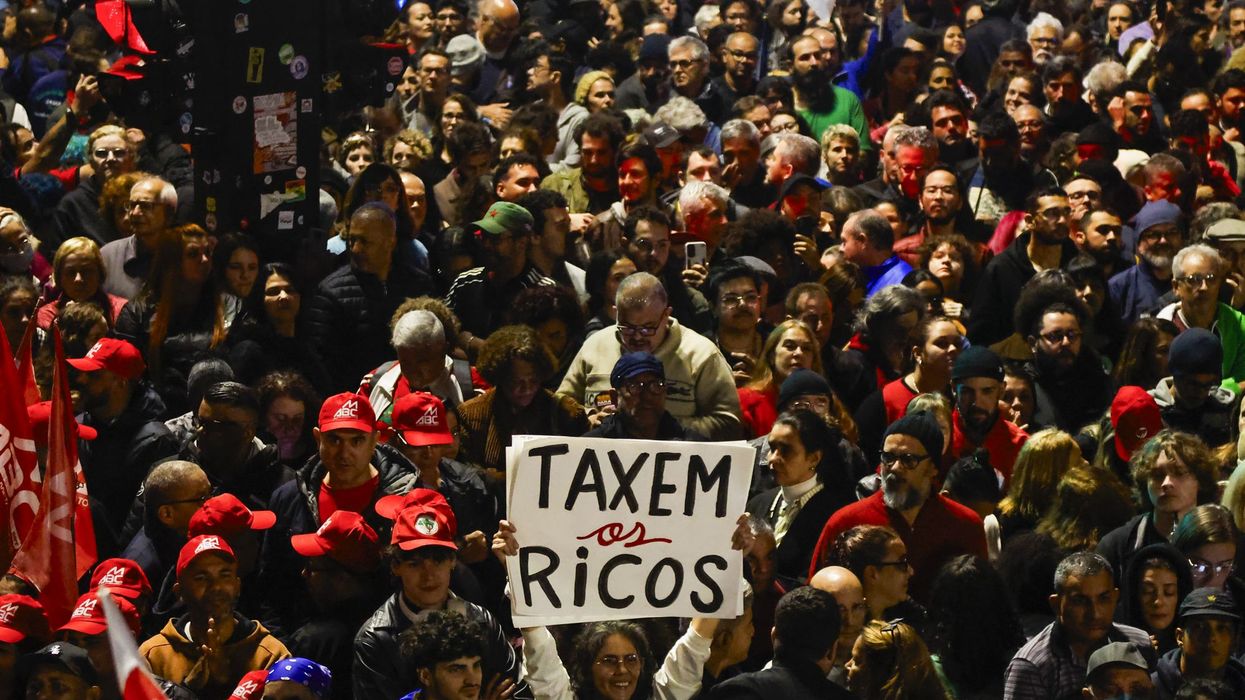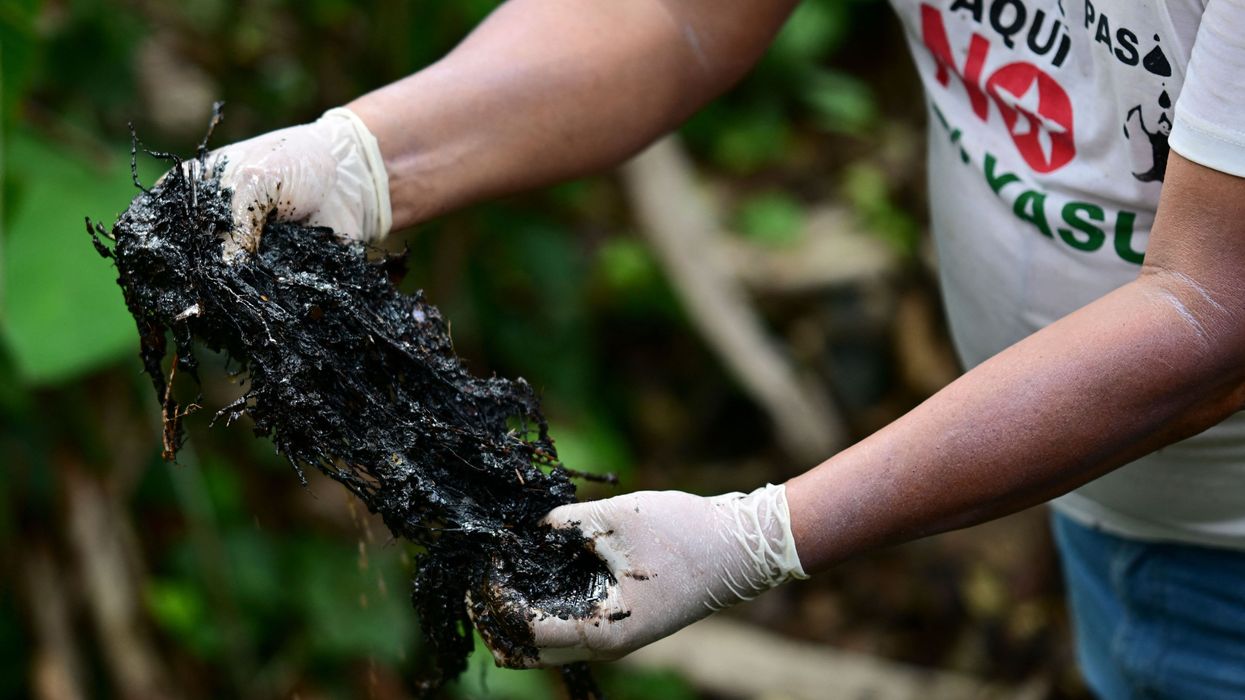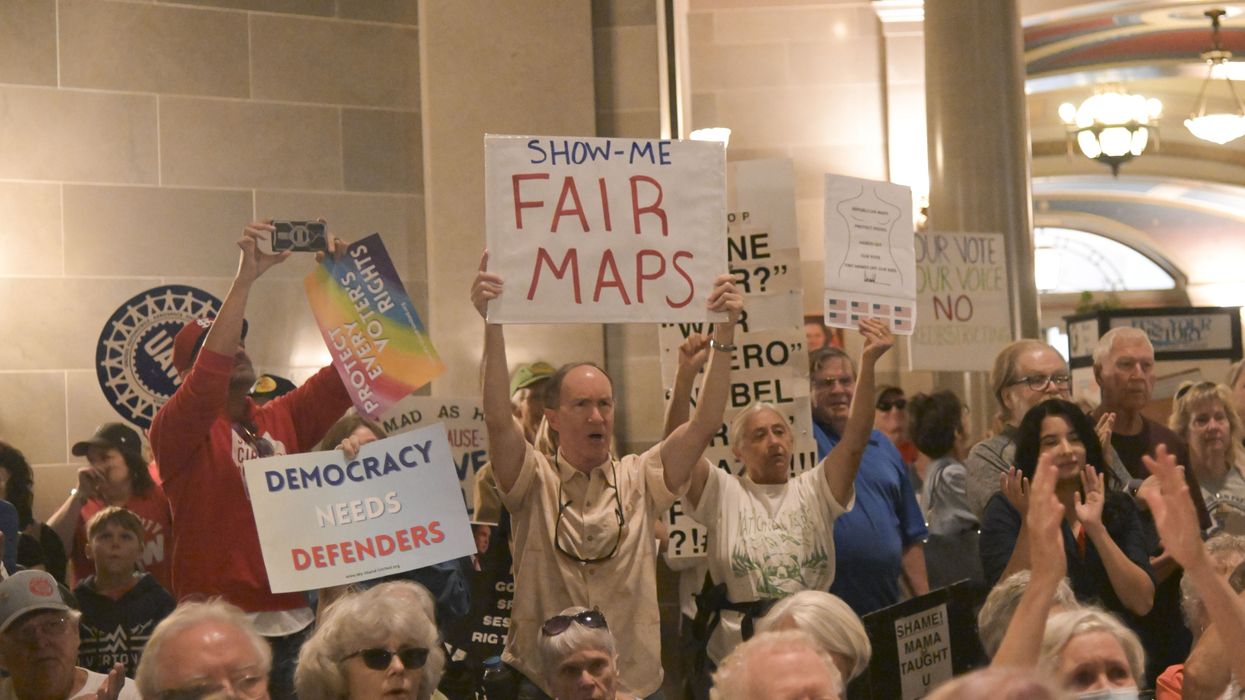October, 02 2008, 09:27am EDT

For Immediate Release
Contact:
Tel: +44 (0) 20 7413 5566,After hours: +44 7778 472 126,Email:,press@amnesty.org
Massacre in Mexico City; Questions Remain
Forty years after one of the worst incidents of mass killing in Mexico's history, the Mexican government still hasn't given answers to questions surrounding the massacre that took place in Mexico City, said Amnesty International.
The organization called on Mexican President Felipe Calderon to establish once and for all the truth behind the massacre that took place in La Plaza de Las Tres Culturas, Tlatelolco, Mexico City, just days before the 1968 Olympics opened. It also urged the government to provide justice and reparations for the families of the victims.
MEXICO CITY
Forty years after one of the worst incidents of mass killing in Mexico's history, the Mexican government still hasn't given answers to questions surrounding the massacre that took place in Mexico City, said Amnesty International.
The organization called on Mexican President Felipe Calderon to establish once and for all the truth behind the massacre that took place in La Plaza de Las Tres Culturas, Tlatelolco, Mexico City, just days before the 1968 Olympics opened. It also urged the government to provide justice and reparations for the families of the victims.
Estimates vary on how many were killed when the Mexican army opened fire on students peacefully demonstrating in Tlatelolco on 2 October 1968. The massacre began at about 6 pm, when police, military and unidentified armed men surrounded the square and opened fire from armoured cars and tanks, using heavy weapons. They fired on students gathered in the square and on surrounding residential buildings. Forty-four bodies were eventually released by the government - ten have still not been identified.
"Forty years on from the Tlatelolco massacre, so many disturbing questions remain unanswered," said Javier Zuniga, now a special advisor at Amnesty International who witnessed the arrival of government troops from a nearby bridge overlooking the square.
"Who ordered the massacre? For how long had it been planned? How many were killed? Who are those whose bodies still have not been identified?"
"It was getting dark at the time the gunfire started, so it was difficult to see exactly what was happening," recalled Zuniga. "But I remember, as clearly now as at the time, that the army moved into the square before the gunfire started and not as a consequence of it, as many government sources have maintained. People panicked and started running in different directions crying 'the army is coming, the army is coming!' Before long, it seemed as if the square was full with bodies."
"I went back early the following morning and saw piles of belts and shoes. Pools of blood remained on the ground despite obvious efforts to wash them away. I also saw large bullet holes on concrete pillars at adult head height."
Despite continuous efforts by victims, relatives and participants in the student movement to establish the truth of what occurred that night, the full facts have never been established and those responsible have not been held to account.
"The failure of the Mexican government to establish the truth of what happened on the night of 2 October 1968 has left a deep scar in Mexican society that can only be healed by full disclosure, bringing the perpetrators to justice, and providing reparations to the victims or their families," said Kerrie Howard, Deputy Director of the Americas Programme at Amnesty International.
President Calderon's government has been all but silent on this dark chapter in Mexico's history," said Kerrie Howard. "We challenge this administration to open all relevant archives and records, establish a new and independent inquiry, and lift the obstacles preventing those responsible for this horrific crime being brought to justice."
Amnesty International is a worldwide movement of people who campaign for internationally recognized human rights for all. Our supporters are outraged by human rights abuses but inspired by hope for a better world - so we work to improve human rights through campaigning and international solidarity. We have more than 2.2 million members and subscribers in more than 150 countries and regions and we coordinate this support to act for justice on a wide range of issues.
LATEST NEWS
Richest 0.001% Now Own Three Times More Wealth Than Poorest Half of Humanity Combined
"The choices we make in the coming years will determine whether the global economy continues down a path of extreme concentration or moves toward shared prosperity."
Dec 10, 2025
A landmark report on global inequality published Wednesday shows that the chasm between the richest slice of humanity and everyone else continued to expand this year, leaving the top 0.001%—fewer than 60,000 multimillionaires—with three times more wealth than the poorest half of the world's population combined.
The global wealth gap has become so staggering, and its impact on economies and democratic institutions so corrosive, that policymakers should treat it as an emergency, argues the third edition of the World Inequality Report, a comprehensive analysis that draws on the work of hundreds of scholars worldwide. Ricardo Gómez-Carrera, a researcher at the World Inequality Lab, is the report's lead author.
"Inequality has long been a defining feature of the global economy, but by 2025, it has reached levels that demand urgent attention," reads the new report. "The benefits of globalization and economic growth have flowed disproportionately to a small minority, while much of the world’s population still face difficulties in achieving stable livelihoods. These divides are not inevitable. They are the outcome of political and institutional choices."
The richest 10% of the global population, according to the latest data, own three-quarters of the world's wealth and capture more income than the rest of humanity. Within most countries, it is rare for the bottom 50% to control more than 5% of national wealth.
"This concentration is not only persistent, but it is also accelerating," the report observes. "Since the 1990s, the wealth of billionaires and centimillionaires has grown at approximately 8% annually, nearly twice the rate of growth experienced by the bottom half of the population. The poorest have made modest gains, but these are overshadowed by the extraordinary accumulation at the very top."
"The result," the report adds, "is a world in which a tiny minority commands unprecedented financial power, while billions remain excluded from even basic economic stability."
The report comes as the world's richest and most powerful nation, led by President Donald Trump, abandons international cooperation on climate and taxation and works to supercharge inequality by slashing domestic and foreign aid programs while delivering massive handouts to the wealthiest Americans.
Jayati Ghosh, a member of the G20 Extraordinary Committee of Independent Experts on Global Inequality and co-author of the forward to the new report, said in a statement that "we live in a system where resources extracted from labor and nature in low-income countries continue to sustain the prosperity and the unsustainable lifestyle of people in high-income economies and rich elites across countries."
"These patterns are not accidents of markets," said Ghosh. "They reflect the legacy of history and the functioning of institutions, regulations and policies—all of which are related to unequal power relations that have yet to be rebalanced.”
Reversing the decadeslong trend of exploding inequality will require the political will to pursue obvious solutions, including fair taxation of the mega-rich and bold investments in social programs and climate action, which is disproportionately fueled by the wealthy.
"The choices we make in the coming years," the report says, "will determine whether the global economy continues down a path of extreme concentration or moves toward shared prosperity."
Keep ReadingShow Less
'Defeat for Justice': Ecuador to Pay Amazon-Polluting Chevron $220 Million
"A debt is not owed to Chevron. A debt is owed to the Amazonian families still waiting for truth, justice, and full reparation."
Dec 09, 2025
A US advocacy group, American human rights lawyer Steven Donziger, and the group in Ecuador behind a historic legal battle against Chevron over its dumping of toxic waste in the Amazon rainforest are condemning the Ecuadorian government's plans to pay the oil giant hundreds of millions of dollars due to an arbitration ruling.
In response to the legal fight in Ecuador that led to a $9.5 billion judgment against Chevron—which bought Texaco—the fossil fuel company turned to the investor-state dispute settlement (ISDS) system, suing the South American country in the Hague-based Permanent Court of Arbitration. As part of the latter case, Ecuadorian Attorney General Diana Salazar Méndez's office announced Monday that the government would pay the US company only around $220 million, rather than the over $3 billion Chevron sought.
While Chevron said in a statement that it was "pleased with the resolution of this matter" and claimed the decision "strengthened the rule of law globally," and Salazar Méndez's office celebrated the dramatically lower figure, and the Union of Peoples Affected by Chevron-Texaco (UDAPT)—the group that began the case against oil company in 1993—pushed back against the government's framing of the reduction "as if it was a success and an economic achievement."
"The reality is it is a defeat for justice," UDAPT argued in a Tuesday statement. "For 32 years, UDAPT has documented pollution, environmental crime, and lives broken by Chevron, proving what should be obvious: Communities have not recovered, health has not been restored, clean water has not returned, and the territories that sustain life remain contaminated. A debt is not owed to Chevron. A debt is owed to the Amazonian families still waiting for truth, justice, and full reparation."
Amazon Watch deputy director Paul Paz y Miño similarly said Tuesday that "this illegitimate arbitration process is nothing more than Chevron abusing the law to escape accountability for one of the worst oil disasters in history."
"Ecuador's courts ruled correctly and based largely on Chevron's own evidence, that Chevron deliberately poisoned Indigenous and rural communities, leaving behind a mass cancer zone in the Amazon," the campaigner continued. "Adding insult to injury, the idea that Ecuador's people should now pay a US oil company that admitted to deliberate pollution is the epitome of environmental racism."
Ecuadorian President Daniel Noboa "must not honor this ISDS award, and the international community must stand behind the victims of Chevron's crimes and demand that the company clean up Ecuador once and for all," Paz y Miño added. "Amazon Watch stands with the affected Indigenous peoples and communities of the Ecuadorian Amazon. We urge President Noboa to reject this illegitimate award, disclose any negotiations with Chevron, and enforce Ecuadorian law by ensuring Chevron pays its debt to those it poisoned."
Donziger—who was detained in the United States for nearly 1,000 days after Chevron went after him in the American legal system for representing Big Oil's victims in Ecuador—was also sharply critical, saying Tuesday that "the decision by a so-called private corporate arbitration panel that claims to absolve Chevron of its massive pollution liability in Ecuador has no legitimacy and does not affect the historic $9.5 billion damages judgment won by Amazonian communities."
"That judgment still stands as the definitive public court ruling in the case," he said. "The private arbitral panel has no authority over the six public appellate courts, including the Supreme Courts of Ecuador and Canada, that issued unanimous decisions against Chevron and confirmed the extensive evidence that the company devastated local communities by deliberately dumping billions of gallons of cancer-causing oil waste into rivers and streams used by thousands of people for drinking, bathing, and fishing."
"I also strongly condemn President Daniel Noboa for his plans to betray his own people by agreeing to send $220 million from the public treasury to Chevron, a company that owes Ecuador billions under multiple court orders for poisoning vulnerable Indigenous peoples with toxic oil waste," Donziger added. "Noboa would effectively grant Chevron a taxpayer-funded bailout financed by the same citizens who remain victims of the company's pollution. This would be an outrageous dereliction of duty and a violation of his oath of office, warranting removal."
Keep ReadingShow Less
After Judge Tosses GOP Lawsuit, Missouri Voters Submit Signatures for Referendum on Rigged Map
"The citizens of Missouri have spoken loudly and clearly: They deserve fair maps, not partisan manipulation,” said one campaigner.
Dec 09, 2025
Opponents of Missouri's GOP-rigged congressional map on Tuesday submitted more than twice the required number of signatures supporting a referendum on the redistricting scheme backed by US President Donald Trump, a move that followed a federal judge's refusal to block the initiative.
The political action committee People Not Politicians turned in more than 300,000 signatures in support of the referendum to Republican Missouri Secretary of State Denny Hoskins' office in what the group called an "unprecedented show of grassroots power."
The submission—which filled 691 boxes—will be reviewed by state election officials tasked with certifying the validity of the roughly 110,000 signatures required for qualification on the November 2026 ballot. If the signatures are approved, the state would be temporarily prohibited from adopting the new map until after the referendum vote.
Hoskins initially rejected People Not Politicians' referendum petition because Missouri Gov. Mike Kehoe, a Republican, had not yet signed the redrawn map into law. Hoskins said he would reject any signatures collected before Kehoe approved the map in September. At that time, People Not Politicians had collected around 92,000 signatures.
“The citizens of Missouri have spoken loudly and clearly: They deserve fair maps, not partisan manipulation,” People Not Politicians executive director Richard von Glahn said in a statement. “We are submitting a record number of signatures to shut down any doubt that Missouri voters want a say.”
The submission followed a Monday ruling by US District Judge Zachary Bluestone—a Trump appointee—rejecting Republican Missouri Attorney General Catherine Hanaway's bid to block the referendum on grounds that the court had no jurisdiction over a lawsuit filed by Hoskins and the GOP-controlled state Legislature arguing that state referendums on congressional maps are unconstitutional.
Supporters of Missouri's referendum are seeking to block redistricting legislation passed in September as part of Trump's push for Republican-controlled state legislatures to rig congressional maps in a bid to preserve GOP control of Congress by eliminating Democratic-leaning districts.
Texas was the first state to do Trump’s bidding by approving a new congressional map that could help Republicans gain five additional House seats. Last week, the US Supreme Court's right-wing majority gave Texas Republicans a green light to use the rigged map in next year's election.
Democratic California Gov. Gavin Newsom responded to Texas' move by spearheading a successful ballot initiative to redraw the Golden State's congressional map in favor his party. Under pressure from Trump, Republican lawmakers in Indiana, Missouri, and North Carolina launched their own gerrymandering efforts.
In Missouri, Republicans are aiming to win seven of the state's eight congressional seats, including by flipping the 5th District, which is currently held by Democratic Rep. Emanuel Cleaver.
Responding to Tuesday's signature submission, Missouri state Rep. Ray Reed (D-83) said on social media that "today, the people of Missouri did something powerful. Organizers across our state: young folks, retirees, faith leaders, neighbors talking to neighbors, came together to defend the idea that in a democracy, voters should choose their leaders, not the other way around."
"Missouri just showed the country what fighting back looks like and I’m proud to stand with the people who made it happen," Reed added.
Keep ReadingShow Less
Most Popular


